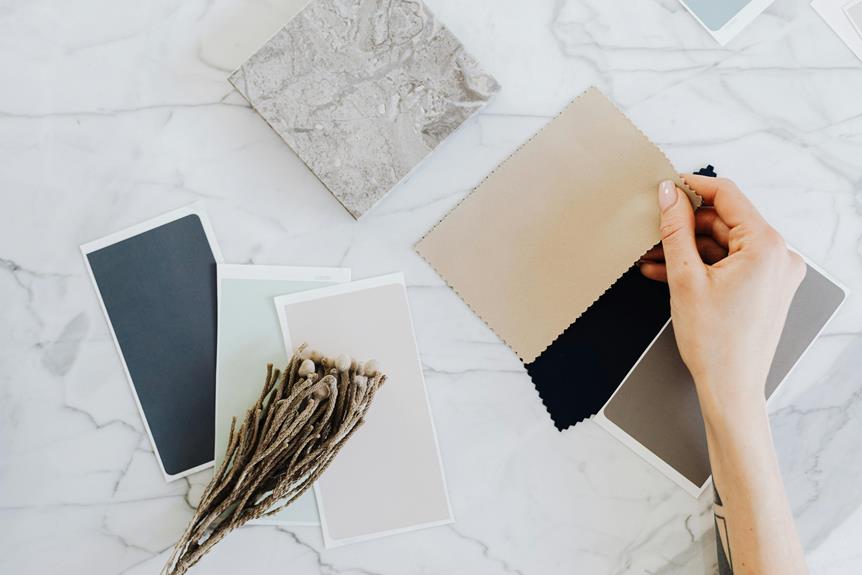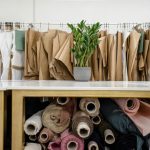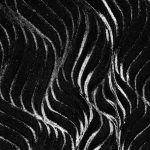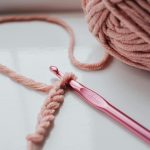When you're choosing the right brocade for your project, it's crucial to start with a clear understanding of your goals. Consider the purpose—are you designing an elegant evening gown or perhaps a statement cushion for your living room? The fabric's weight, color, and texture will play significant roles in achieving the desired outcome. However, these choices can often feel overwhelming, especially when you factor in your budget and quality requirements. What you may not realize is how these elements can impact not just the look, but the feel of your creation.
Table of Contents
Understanding Brocade Types
There are several types of brocade, each offering unique textures and patterns to suit different design needs. When you explore brocade, you'll encounter various styles like silk brocade, which boasts a luxurious sheen and intricate designs, perfect for formal wear or elegant home décor.
If you're looking for something more durable, consider polyester brocade. It's often more affordable and resistant to wrinkles, making it a popular choice for upholstery and everyday garments.
Jacquard brocade features complex patterns woven directly into the fabric, allowing for stunning visual effects. This type is ideal for statement pieces that catch the eye.
If you're drawn to tradition, look into metallic brocade, which incorporates gold or silver threads, adding a touch of opulence to your projects.
Lastly, you might come across embroidered brocade, where intricate designs are stitched onto the fabric, offering depth and dimension.
As you choose the right brocade, think about your project's purpose and desired aesthetic. Each type has its strengths, so understanding these options will help you create the perfect look for your needs.
Assessing Fabric Weight
When selecting brocade, assessing the fabric weight is crucial, as it influences the drape and feel of your final project. The weight of the fabric can determine how it behaves when sewn and how it looks when worn or displayed. You'll want to consider a few key factors when evaluating brocade weight.
Project Type: Heavier fabrics are great for structured garments, while lighter weights work well for flowing dresses or linings.
Comfort: Think about how the weight will feel against the skin, especially for garments. You wouldn't want a heavy fabric for something that's meant to be comfortable.
Seasonality: Lighter brocades are perfect for warmer months, while heavier options are ideal for fall and winter projects.
Layering: If you're planning to layer your fabric, consider how different weights will interact. Too many heavy layers can make a garment bulky.
Exploring Color Options
Choosing the right color for your brocade can significantly impact the overall aesthetic of your project. It's essential to think about the mood you want to convey. Are you aiming for elegance, vibrancy, or perhaps something more subdued? Consider the space or event where your finished piece will be displayed. For instance, rich jewel tones can create a luxurious atmosphere, while pastel shades often evoke a sense of calm.
Next, don't forget to factor in your existing color palette. Look at the colors already present in your decor or wardrobe, and choose a brocade that complements or contrasts effectively. If you're working on a statement piece, bold colors can draw attention and become a focal point. On the other hand, if you prefer a more understated look, opt for muted tones that blend seamlessly.
Another aspect to consider is the color's versatility. Will it work across various projects or only one? Finally, trust your instincts—color is subjective, and you should choose what resonates with you. Don't hesitate to collect swatches and test them in different lighting to see how the colors shift throughout the day.
Evaluating Texture and Finish
Evaluating the texture and finish of your brocade is crucial, as these elements can greatly influence the tactile experience and overall aesthetic of your project.
You'll want to consider how the fabric feels against your skin and how it interacts with light. A smooth finish can lend an elegant touch, while a textured surface might add depth and visual interest.
When assessing brocade, keep the following points in mind:
- Feel: Determine if the fabric feels soft or coarse; this can affect comfort in garments or upholstery.
- Sheen: Observe how light reflects off the material. A shiny finish can enhance vibrancy, while a matte finish offers subtlety.
- Weight: Heavier brocades provide structure, making them ideal for tailored pieces, while lighter options work well for draping.
Considering Project Purpose
Understanding the purpose of your project helps narrow down the types of brocade that will best suit your needs. Whether you're creating an elegant gown, a decorative pillow, or a stage backdrop, the intended use of your fabric will guide your choice. Consider the following table to help clarify your project goals:
| Project Type | Key Considerations | Ideal Brocade Type |
|---|---|---|
| Evening Wear | Drapability, sheen, comfort | Silk brocade |
| Home Décor | Durability, stain resistance | Jacquard brocade |
| Costumes | Flexibility, vibrant patterns | Velvet brocade |
| Accessories | Lightness, intricate details | Metallic brocade |
| Upholstery | Strength, ease of cleaning | Heavyweight brocade |
Budgeting for Your Fabric
Once you've identified the right brocade for your project, it's important to set a budget that aligns with your design goals and fabric choices. Establishing a budget helps you make informed decisions about the quality and quantity of fabric you can afford. Take the time to evaluate your financial constraints while keeping your project's vision in mind.
Here are some tips to help you budget effectively:
- Determine Fabric Costs: Research the price range for the brocade you're considering. Prices can vary widely based on material, design, and quality.
- Factor in Additional Expenses: Don't forget to include costs for shipping, taxes, and any additional materials you might need, like thread or interfacing.
- Consider the Quantity: Calculate how much fabric you'll need for your project. Buying too little can lead to costly mistakes, while overestimating can strain your budget.
Sourcing Quality Brocade
When sourcing quality brocade, you need to consider the fabric composition to ensure it meets your needs.
It's also crucial to assess the reputation of your suppliers, as this can significantly impact the quality of the fabric you receive.
Fabric Composition Considerations
Sourcing quality brocade requires careful attention to the fabric's composition, as it directly affects durability, texture, and overall aesthetic. When you're selecting brocade, consider the blend of fibers used. Common compositions include silk, polyester, and cotton, each bringing unique qualities to the table.
Here are some key points to keep in mind:
- Silk: Offers a luxurious feel and natural sheen, but can be more delicate and requires special care.
- Polyester: Known for its durability and resistance to wrinkles, it's a practical choice for projects needing longevity and ease of maintenance.
- Cotton: Provides breathability and softness, ideal for casual applications, but may lack the opulence that silk or blended options provide.
Supplier Reputation Assessment
Assessing a supplier's reputation is crucial for ensuring you receive high-quality brocade that meets your standards.
Start by researching potential suppliers online. Check their websites, focusing on their product offerings, customer testimonials, and any certifications they may have. This initial assessment gives you a sense of their credibility.
Next, dig deeper by reading reviews on independent platforms. Look for consistent praise or complaints, as these can highlight the supplier's strengths and weaknesses. Don't hesitate to reach out to other businesses in your network for recommendations or experiences with specific suppliers.
Also, consider how long the supplier has been in the industry. A well-established supplier often indicates reliability and expertise.
Request samples of their brocade to evaluate the quality firsthand. This step allows you to assess the fabric's feel, durability, and overall appearance.
Frequently Asked Questions
Can Brocade Be Machine Washed or Should It Be Dry Cleaned?
Brocade generally isn't machine washable; it's best to dry clean it. Washing can damage the intricate patterns and fabric integrity. Always check care labels to ensure you're treating your fabric correctly for longevity.
What Is the Best Way to Store Brocade Fabric?
To store brocade fabric, keep it in a cool, dry place, away from direct sunlight. Fold it gently to avoid creasing and use acid-free tissue paper to maintain its shape and quality over time.
How Does Brocade Compare to Other Fabrics Like Silk or Velvet?
Brocade's luxurious texture and intricate patterns set it apart from silk's smoothness and velvet's softness. You'll find brocade's durability and ornate designs make it a unique choice for elegant garments and home decor.
Is Brocade Suitable for Outdoor Projects or Upholstery?
Brocade isn't ideal for outdoor projects due to its tendency to absorb moisture and fade in sunlight. For upholstery, it can work well, but consider durability and maintenance to ensure it lasts over time.
Can I Use Brocade for Garments Without Added Lining?
You can use brocade for garments without added lining, but keep in mind its weight and texture. It might feel a bit scratchy, so consider your comfort level and the garment's intended use before proceeding.
- How Does Ring Spun Cotton Affect Garment Fit and Shape Retention? - August 13, 2024
- What Are the Challenges in Producing Ring Spun Cotton? - August 13, 2024
- Is Ring Spun Cotton Suitable for Plus-Size Clothing? - August 13, 2024





